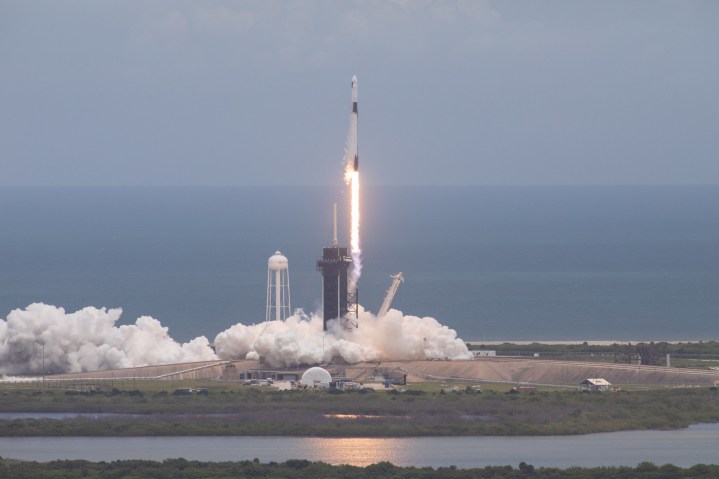This Tuesday a SpaceX Falcon 9 rocket will launch from Launch Complex 39A (LC-39A) at NASA’s Kennedy Space Center in Florida on a resupply mission to the International Space Station (ISS) called CRS-26. The uncrewed Dragon spacecraft will carry research equipment and a pair of new solar arrays to the station, autonomously docking there on Wednesday.
If you’d like to follow along with the launch and the catching of the rocket’s first stage, the event will be livestreamed by NASA, and we have the details on how to watch below.
What to expect from the launch

The spacecraft will be carrying supplies for the ISS and a variety of scientific experiments, including tissue chips for research into human health, a test of an implantable drug delivery device, and a bone adhesive compound for repairing fractures. In addition, the craft will also carry a pair of new solar arrays for the space station, called iROSAs, which are part of long-term upgrades to the station’s power systems.
The launch had been scheduled for Monday, November 21, but was rescheduled to Tuesday instead, as there were some repairs to the spacecraft that needed to be made. A SpaceX representative said that the issue was “a leak that we discovered in a few days ago in one of our thermal control system,” caused by “a single flange it wasn’t seated properly because there’s a damaged rubber seal.” The fluid from the system was drained, the seal was replaced, and the fluid was refilled. Now, the spacecraft is ready to fly.
How to watch the launch
The launch will be livestreamed by NASA on its channel NASA TV. Coverage will begin at 3:30 p.m. ET (12:30 p.m. PT) on Tuesday, November 22, with the launch itself scheduled for 4:19 p.m. ET (1:19 p.m. PT).
To watch the launch, you can either head to NASA’s YouTube page for the event or use the video embedded near the top of this page.
NASA TV will also show the craft docking to the International Space Station early on Wednesday morning. Coverage will begin at around 4:30 a.m. ET (1:30 a.m. PT) on Wednesday, with docking scheduled for just before 6 a.m. ET (3 a.m. PT).
To watch the docking, you can use the livestream of the NASA TV channel.



